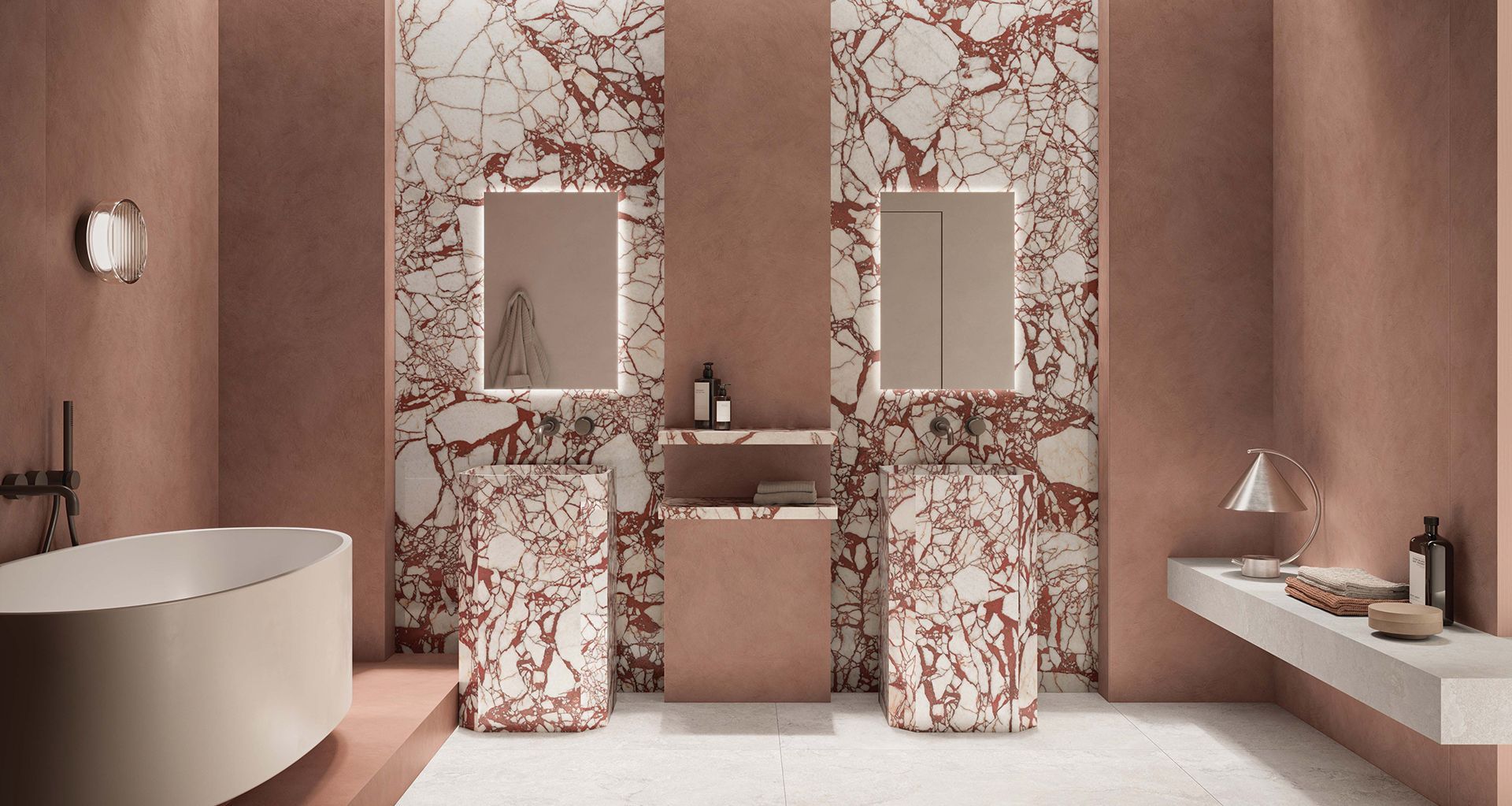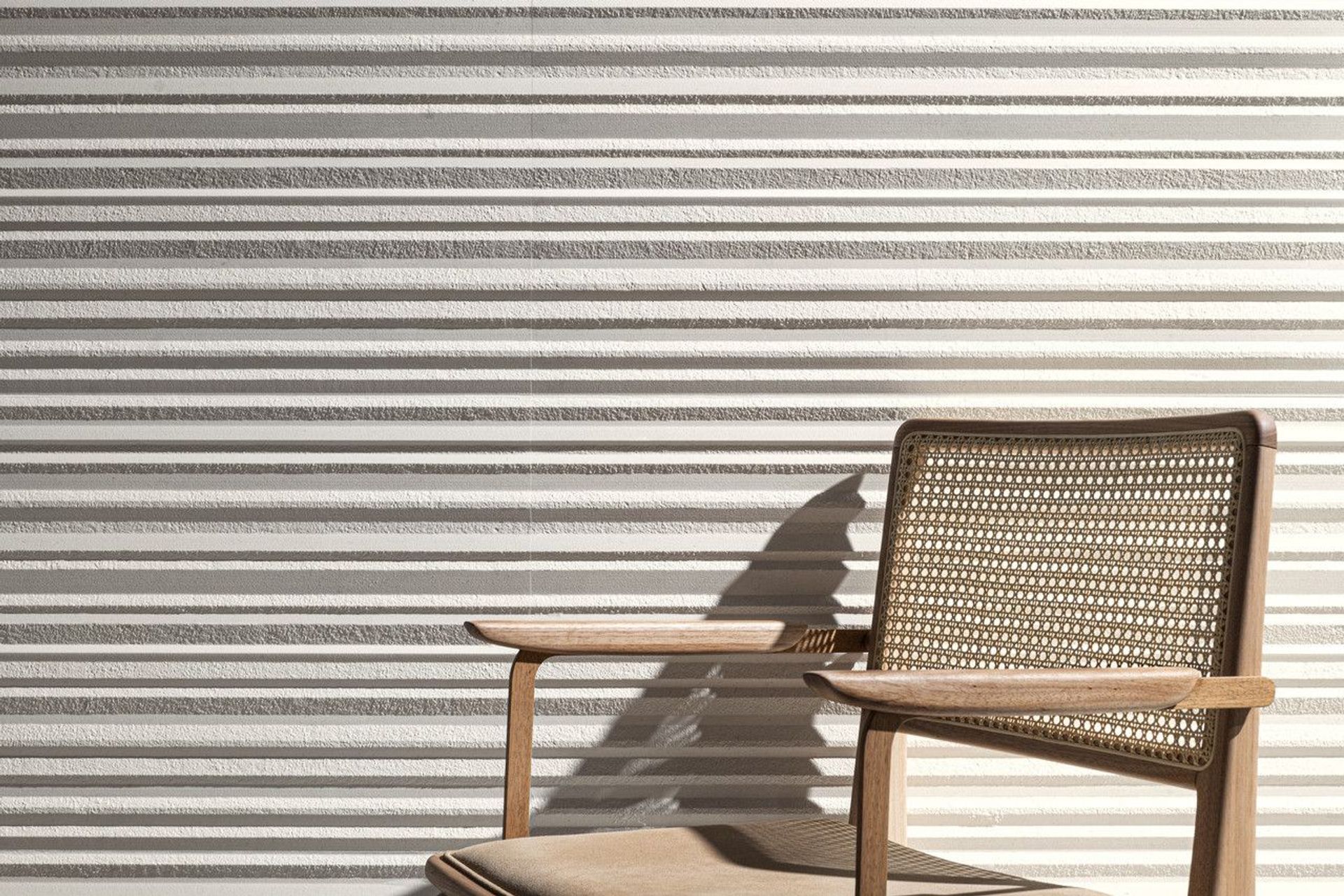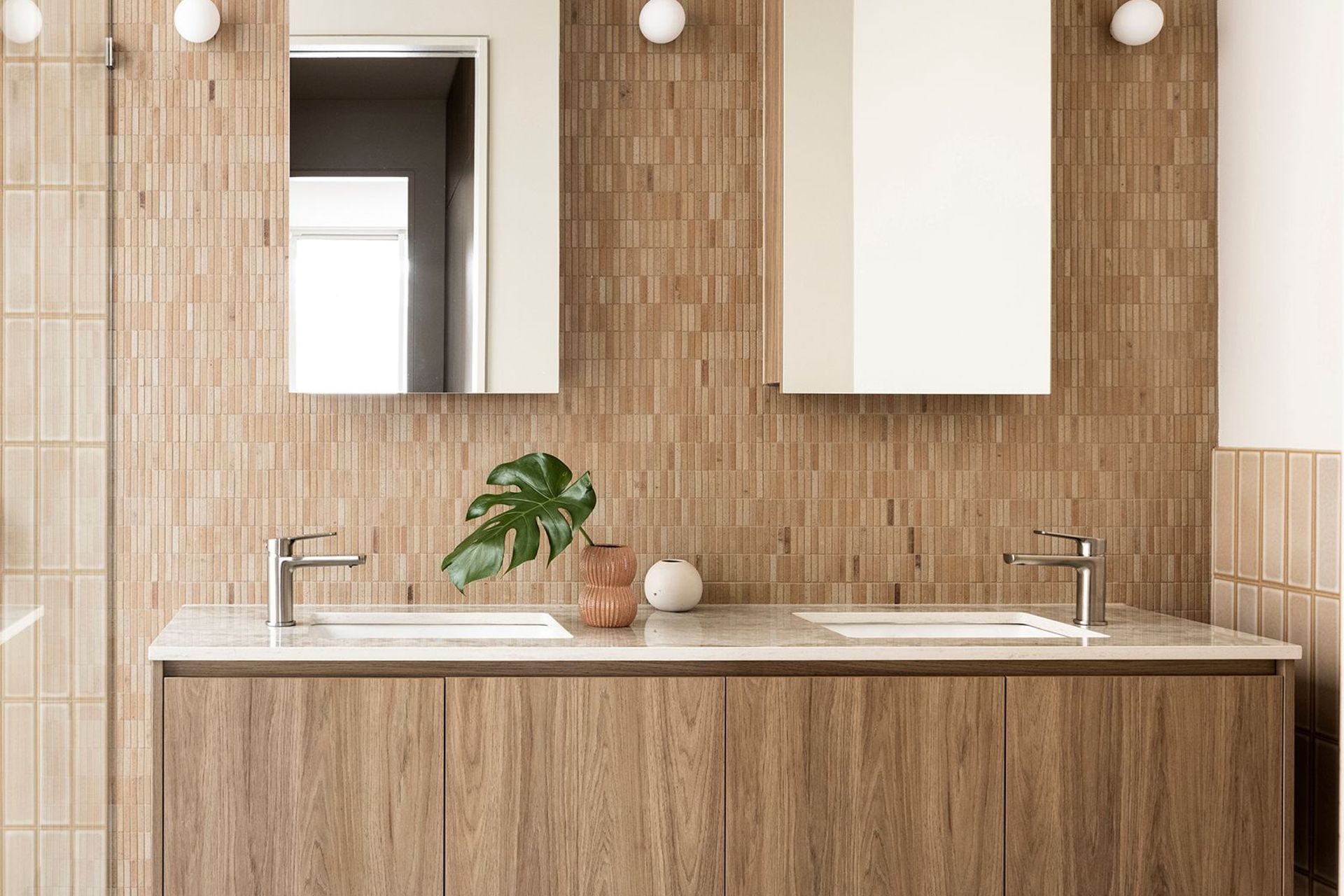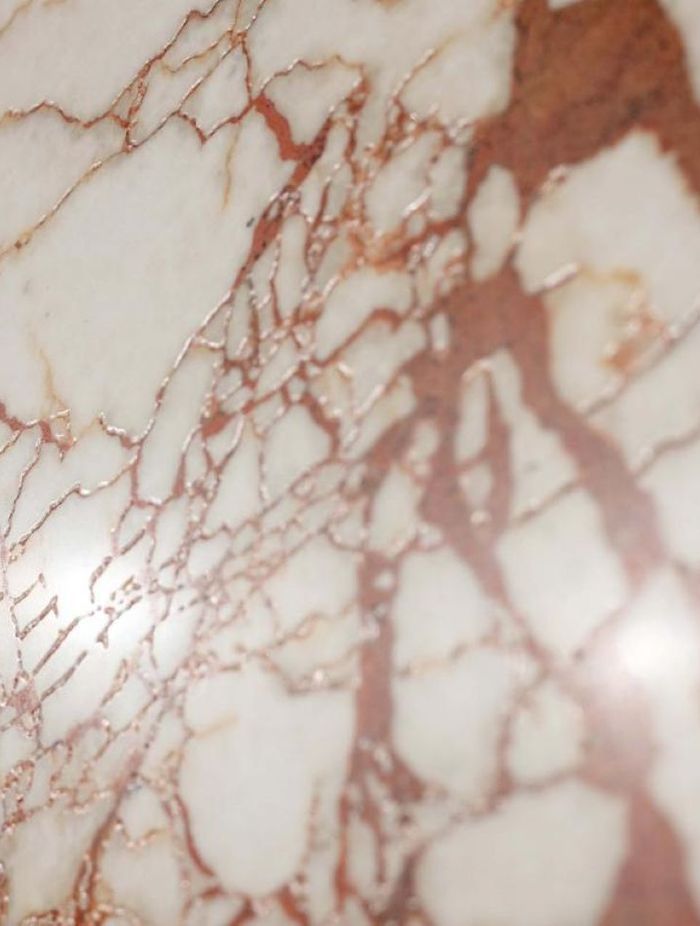Unearthing the differences: A deep dive into porcelain, ceramic, and stone tiles
Written by
18 June 2025
•
7 min read

Tiles are an exciting and enticing finish to consider for residential and commercial spaces in New Zealand. A popular choice throughout the country, the range of options and considerations is vast; however, perhaps the most important of these is deciding which material type to choose.
We spoke to industry experts, Sarah Collins and Jack Sun from Tile Space’s Commercial Team, to get their insight on the different qualities of each, to help guide the decision-making for your next project.
Understanding durability and strength
As a finish that could potentially adorn your walls, floors and even the exterior of your home, it’s important to understand the durability of these options to ensure you pick a solution that’s fit for purpose.
With application in mind, you can sometimes rule out one option straight away, as Sarah Collins explains.
“In general, Ceramics are more of a decorative option best suited to wall applications rather than floors. As the body of the tile is too soft to withstand foot traffic .”
This is predominantly due to the nature of the raw materials used in ceramic tiles, their density and the fact that they are fired at lower temperatures in the kiln.
Jack Sun says that porcelain, on the other hand, is a highly durable and versatile choice.
“Porcelain is probably one of the most durable materials in the building industry. It’s fired at about 1,300°C and can withstand thousands of pounds of pressure per square inch. It’s colourfast and UV resistant too.”
Both agree that natural stone can have impressive strength, too, often used in exterior applications. However, Jack points out that it’s important to distinguish different types of natural stone from one another as they can have quite contrasting properties.
“Marbles and white bodied pieces are generally a little bit softer, to my knowledge, while darker pieces, like granite, are usually very dense.”

The importance of water absorption
Water absorption is an incredibly important factor to consider when looking at tile materials as something that can potentially lead to structural integrity issues, especially in parts of the South Island that get particularly cold.
This characteristic is articulated in what’s called a water absorption rate, which is expressed as a percentage of water absorbed by a material over time. A tile with a higher water absorption rate can lead to water potentially penetrating, causing the tile to crack after thermal cycles.
To break it down more clearly, Jack describes this measure in a bit more detail.
“To actually classify a tile as porcelain, it has to be below 0.5% water absorption rate. In reality, a lot of our porcelain tiles have a 0.05% water absorption rate. Whereas ceramic, you're looking at anywhere from 0.5 to 14%, and sometimes even higher.”
While strong and dense, natural stone is typically porous, so it does need to be sealed regularly to protect it from staining and water absorption.

Setting expectations for maintenance and costs
With nearly any feature in the home, there’s a degree of care and maintenance involved with tiles to keep them at their best. As just mentioned, natural stone tiles are probably the most involved of the three, something Sarah says can catch people off guard.
“People don't always tend to think about the maintenance side of natural stone, but it needs to be sealed and maintained. You need to do that on a yearly basis, otherwise it's prone to staining.”
Jack also states that you have to be careful with the products/chemicals you use on natural stone.
“You have to watch your cleaners with natural stone, but with porcelain, you can throw anything at it, and it will be fine. Ceramics are good with chemicals, too, and you can scrub them without any problems.”
When it comes to costs, most people rightly assume natural stone to be the most expensive option, but as Jack explains, the reason for this isn’t just down to the purchase price of the tiles.
“Generally speaking, ceramic is more affordable because stone, as a natural material itself, is expensive and its installation is even more so.”
Sarah elaborates on this point further.
“In terms of the engineering for a building, the weight of stone versus porcelain requires a lot more integrity and work on the exterior of a building.”
There are some exceptions to these rules, as you’ll find ceramic and porcelain tiles that are more expensive than natural stone products, but generally, the former two will be more affordable.
The virtues of sustainability
The area of sustainability on all fronts has seen great progress in recent years as brands, manufacturers and customers increasingly have a stronger eco-focus.
The merits of all three options in this context are commendable, especially when compared to synthetic alternatives, as Jack explains.
“They are inert products that come from the earth, so it doesn’t have chemicals leaching out like some other products, and at the end of their life cycle, they can be recycled.”
Sarah also explains that aligning with reputable and certified suppliers is a key part of their strategy.
“Several of our suppliers are B Corp Certified — a designation that is difficult to achieve and involves measuring a company’s entire social and environmental impact. They also hold Green Star Ratings and demonstrate a strong commitment to recycling materials and reducing waste.”
Jack goes on to say that many of these manufacturers have achieved this through improved production processes.
“The production processes in some of the factories now are pretty much a closed loop. A lot of the waste materials get reused. All the water is recycled, and some have solar energy to power the kilns, so it has very little negative impact on the environment.”

Appearances are everything
Last but not least, we turn to looks, a matter that is of utmost importance for any feature in the home. Tiles are intrinsically pleasing to the eye, a trait that draws many people to them in the first place, which is why they are such a popular choice.
When looking at the three options on aesthetics alone, many would reasonably conclude that natural stone is the standout choice.
Natural stone undoubtedly offers luxurious elements with its rich colours, deep textures and natural veining, which few can deny. In bygone years, this is where the conversation would start and end when comparing the visual qualities of the three.
However, Sarah explains that the technology around surface printing, used in the production of porcelain tiles, has made this discussion far more interesting.
“The quality and technology of surface printing are constantly evolving. You can look across the surface of the tile, and you can both see and feel the vein on the surface, just like the veining in natural stone.”
Jack says the advent of 3D printing has helped add to the tactile experience, with manufacturers going to great lengths to capture the look and allure of natural stone.
“The 3D print technology involves multiple passes, which create the layers that allow the veining to appear more realistic. Companies visit quarries and take images of the actual marble/stone to print onto their pieces. Some have up to 128 faces and different patterns, so spotting the repeats becomes almost impossible.”
The replication is almost surreal and is something that has made the look of natural stone much more attainable for many with modest budgets. That being said, there will always be purists who insist on genuine marble or granite, and there are some qualities of natural stone that are unique to themselves, as Sarah continues.
“With natural stone, you get the chips and wear you get with ageing, and some clients really like that. In Italy, you'll see marble mosaics everywhere that are hundreds of years old with those traits, which is part of the beauty.”
Not to be left out, ceramic tiles also have their own unique characteristics when it comes to aesthetics, which shouldn’t be overlooked. In his final comments, Jack quickly summarises these, giving us plenty of food for thought to finish on.
“Because ceramic tiles are usually fired in the kiln at a lower temperature, there are more possibilities in terms of shapes, and different sizes and colours, which is again why they are traditionally decorative.”
Find out more about Tile Space and their amazing range of quality tiles

